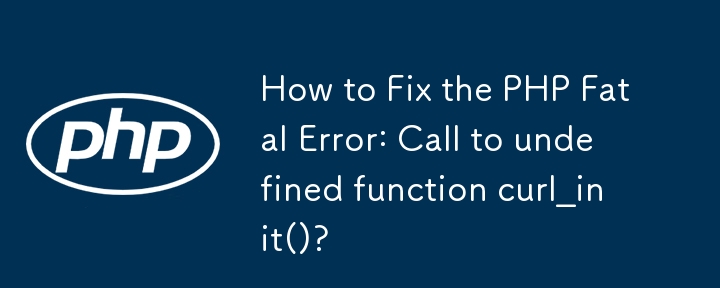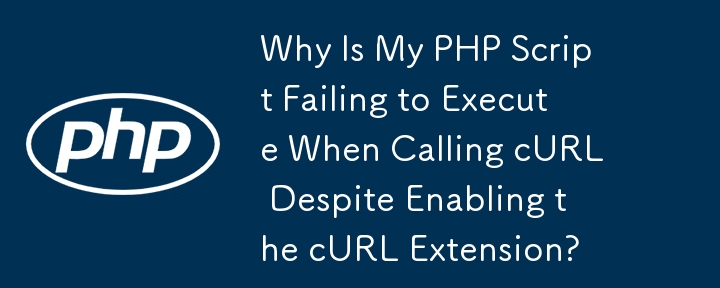Found a total of 10000 related content

cURL in PHP: How to Use the PHP cURL Extension in REST APIs
Article Introduction:The PHP Client URL (cURL) extension is a powerful tool for developers, enabling seamless interaction with remote servers and REST APIs. By leveraging libcurl, a well-respected multi-protocol file transfer library, PHP cURL facilitates efficient execution of various network protocols, including HTTP, HTTPS, and FTP. This extension offers granular control over HTTP requests, supports multiple concurrent operations, and provides built-in security features.
2025-03-14
comment 0
1045

How to fix PHP Curl HTTPS Certificate Authority issues on Windows
Article Introduction:A successful HTTPS request involves the HTTP client validating the server-provided TLS certificate against a list of known and trusted root certificates. The PHP Curl extension is not different; the Curl extension uses libcurl to make the HTTPS reque
2024-11-11
comment 0
1471
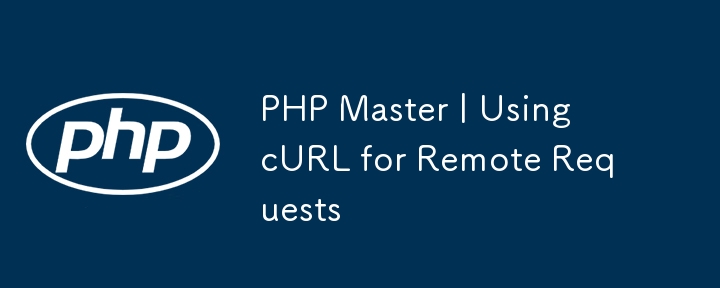
PHP Master | Using cURL for Remote Requests
Article Introduction:If you’re a Linux user then you’ve probably used cURL. It’s a powerful tool used for everything from sending email to downloading the latest My Little Pony subtitles. In this article I’ll explain how to use the cURL extension in PHP. The extension of
2025-02-23
comment 0
709
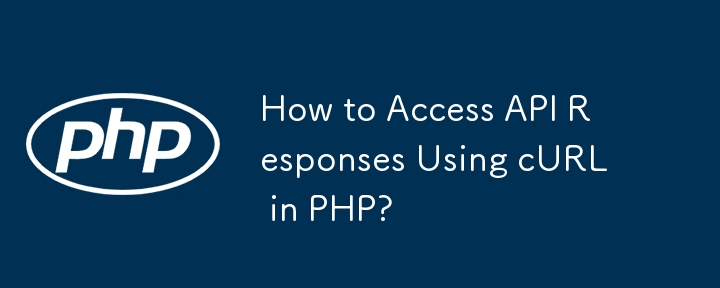
How to Access API Responses Using cURL in PHP?
Article Introduction:This article presents a technique for integrating external API functionality into PHP applications using cURL, a PHP library. It demonstrates the creation of a standalone PHP class for API invocation with cURL, facilitating response acquisition and i
2024-10-24
comment 0
1213

How to Create Classes and Objects in PHP 7?
Article Introduction:This article explains class and object creation in PHP 7. It details the differences between classes (blueprints) and objects (instances), illustrates object-oriented programming principles (encapsulation, abstraction, inheritance, polymorphism), a
2025-03-10
comment 0
424

Object-Oriented PHP Syntax: Classes, Objects, and Methods
Article Introduction:Classes and objects in PHP realize code organization and reuse through encapsulation, methods and access control. Define the class to use the class keyword, which contains attributes and methods, such as classCar{private$color; publicfunctionsetColor($newColor){$this->color=$newColor;}}; create objects to use the new keyword, such as $myCar=newCar(); access attributes and methods through the -> operator; public, protected, and private control access permissions to implement data encapsulation; the constructor __construct() is used for initialization
2025-07-16
comment 0
255

How to Get API Responses Using cURL in PHP?
Article Introduction:This article demonstrates how to retrieve API responses using cURL in PHP. It provides a standalone class with a function to call an API via cURL and obtain the response. The function handles various cURL options, including return transfer, header su
2024-10-25
comment 0
390

How do I use platform requirements to specify required PHP extensions?
Article Introduction:The way to define the required extension in a PHP project is through the config.platform object of composer.json. The specific steps are: open the composer.json file; add or locate the config.platform object; list the required extension and its minimum version (or use to represent any version). For example: "php":"8.1","ext-curl":"","ext-gd":"2.0","ext-mbstring&qu
2025-07-05
comment 0
647

How to Retrieve API Responses Using cURL in PHP?
Article Introduction:This article presents a PHP class (ApiCaller) that facilitates obtaining responses from an API using cURL. The class provides a standardized and reusable method for performing HTTP GET requests and handling options such as headers, auto-redirection,
2024-10-24
comment 0
1026
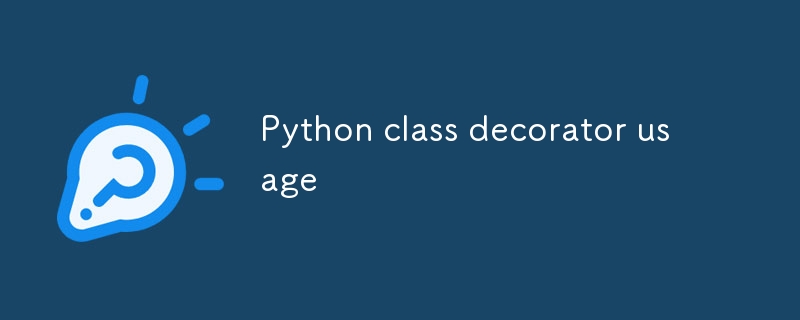
Python class decorator usage
Article Introduction:Using classes as decorators is more flexible and suitable for saving state or complex logic. Its core lies in: 1. Init initialization parameters of the class; 2. Call handles function calls; 3. Supports parameter decoration, and needs to be packaged with another layer; 4. It can record status, extension functions, and multi-layer encapsulation; 5. Meta-information is not retained by default, and can be repaired by functools.wraps.
2025-07-03
comment 0
427

How to fix 'the requested PHP extension is missing' error in Composer?
Article Introduction:Check for PHP extensions that clearly lack error information (such as ext-curl); 2. Install or enable the corresponding extension according to the system (Linux with apt, macOS with brew or pecl, Windows with Windows) and restart the server; 3. Use php-m to verify whether the extension is loaded successfully; 4. If Composer still reports an error, confirm that the PHP version is consistent or temporarily ignore the platform requirements (not recommended for production). The problem is usually solved by correctly installing the extension and restarting the service.
2025-08-21
comment 0
210
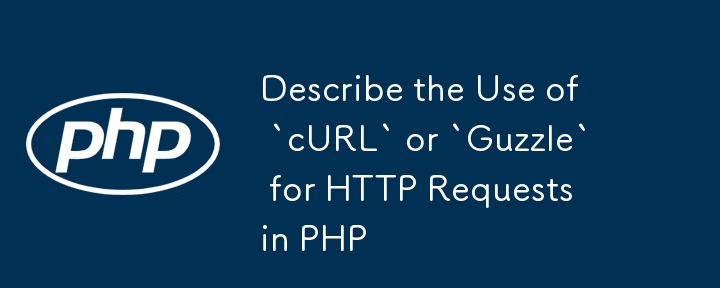
Describe the Use of `cURL` or `Guzzle` for HTTP Requests in PHP
Article Introduction:In PHP, cURL is suitable for projects that require underlying control and lightweight scenarios, and Guzzle is suitable for projects that pursue development efficiency and maintainability. 1.cURL is a built-in extension for PHP, suitable for scenarios where simple requests and no additional dependencies are required, but the code is cumbersome and error handling is complex; 2. Guzzle is a modern PHP library with good packaging, rich functions, and supports PSR standards, which is easy to integrate into large applications or frameworks; 3. The selection basis is project complexity: use cURL for simple scripts, and choose Guzzle when complex systems or advanced functions are required.
2025-07-11
comment 0
695
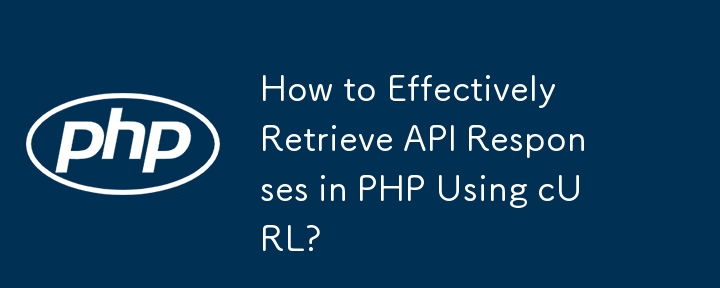
How to Effectively Retrieve API Responses in PHP Using cURL?
Article Introduction:This article presents a standalone PHP class for working with APIs using the cURL library. It provides a method to execute API calls and capture responses as JSON, making it easier for developers to integrate with external services. The code
2024-10-24
comment 0
1220
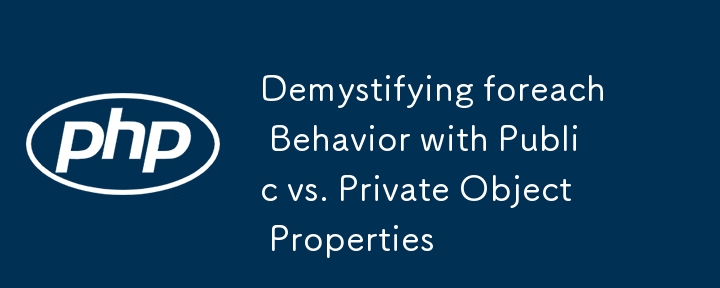
Demystifying foreach Behavior with Public vs. Private Object Properties
Article Introduction:Foreach only accesses public attributes when traversing objects in PHP; 2. Protected and private attributes are not visible, even if you use foreach($thisas...) inside the class; 3. To customize the traversal behavior, you can implement the Iterator or IteratorAggregate interface; 4. To check the properties that include private and protected, you need to use the Reflection class; 5.get_object_vars() also only returns the public attributes under the current scope. Therefore, foreach's behavior is the embodiment of PHP encapsulation characteristics, and non-public attributes will not be traversed.
2025-08-04
comment 0
324

How to Fetch API Responses Using cURL and PHP: A Step-by-Step Guide?
Article Introduction:This article provides a code snippet for a PHP class that utilizes cURL to fetch API responses. The snippet defines a function to retrieve the API response, handle redirects, set user agent, and manage timeouts, making it a useful tool for interactin
2024-10-26
comment 0
1105

PHP Master | Adding Text Watermarks with Imagick
Article Introduction:Imagick PHP extension library details: Add text watermark to images
This article will explain how to use PHP's Imagick extension library to add text watermarks to images. We will explore a variety of methods, including simple text overlay, creating transparent text watermarks using font masks, and more advanced text tiling techniques.
Key points:
Imagick is a powerful PHP extension library that can be used to process images, including adding text watermarks.
Text watermarking can be achieved by creating an Imagick class instance, reading an image, setting the font properties using the ImagickDraw instance, and then adding text to the image using the annotateImage() method.
There are many ways to add text
2025-02-25
comment 0
365
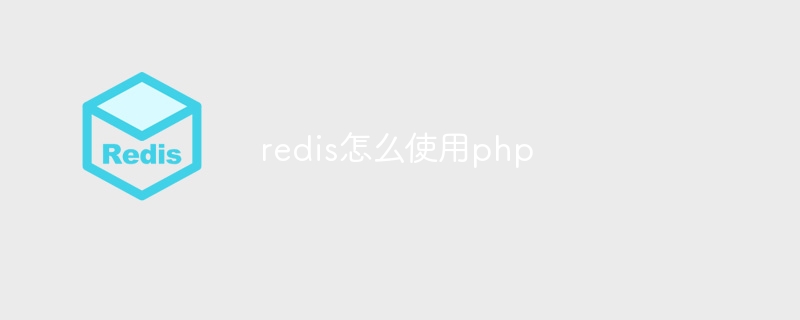
How to use php for redis
Article Introduction:Question: How to use Redis in PHP? Install the Redis PHP extension. Connect to the Redis server, use the Redis class. Store and retrieve data, and support strings, hashs, lists, and collections. Use other commands such as checking for the existence of a key, deleting a key, and setting the expiration time of the key. Close the connection after using Redis.
2025-04-10
comment 0
820
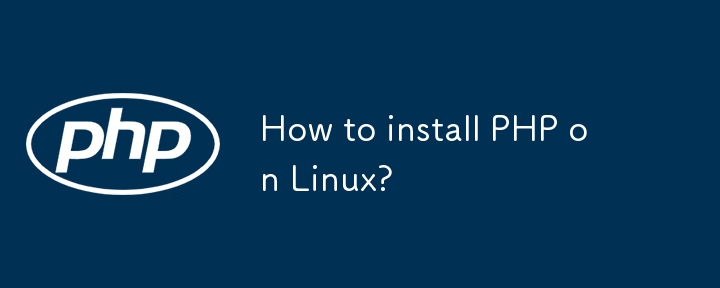
How to install PHP on Linux?
Article Introduction:The steps to install PHP on Linux are as follows: 1. Confirm the system environment and PHP version requirements, and use php-v to check the current version; 2. Use package manager to install, use apt with Ubuntu/Debian, use yum or dnf with CentOS/Fedora; 3. Install commonly used extension modules such as php-curl, php-mysql, php-gd, php-mbstring, php-xml, and restart the web service to take effect; 4. Advanced users can choose source code compilation and installation, and they need to download source code packages, decompress, configure, compile and install. Follow the above method to complete the installation and configuration of PHP.
2025-06-28
comment 0
526


